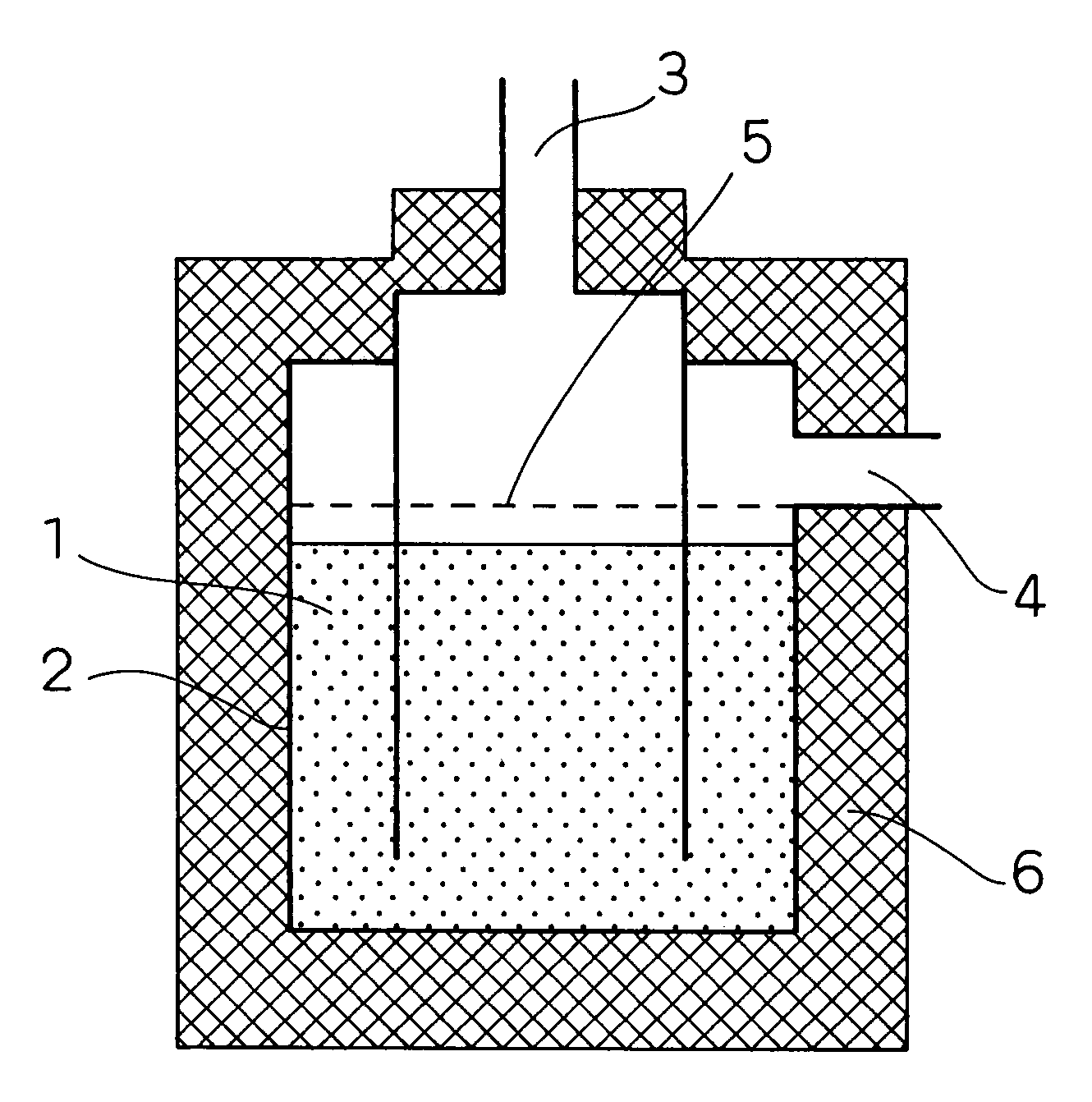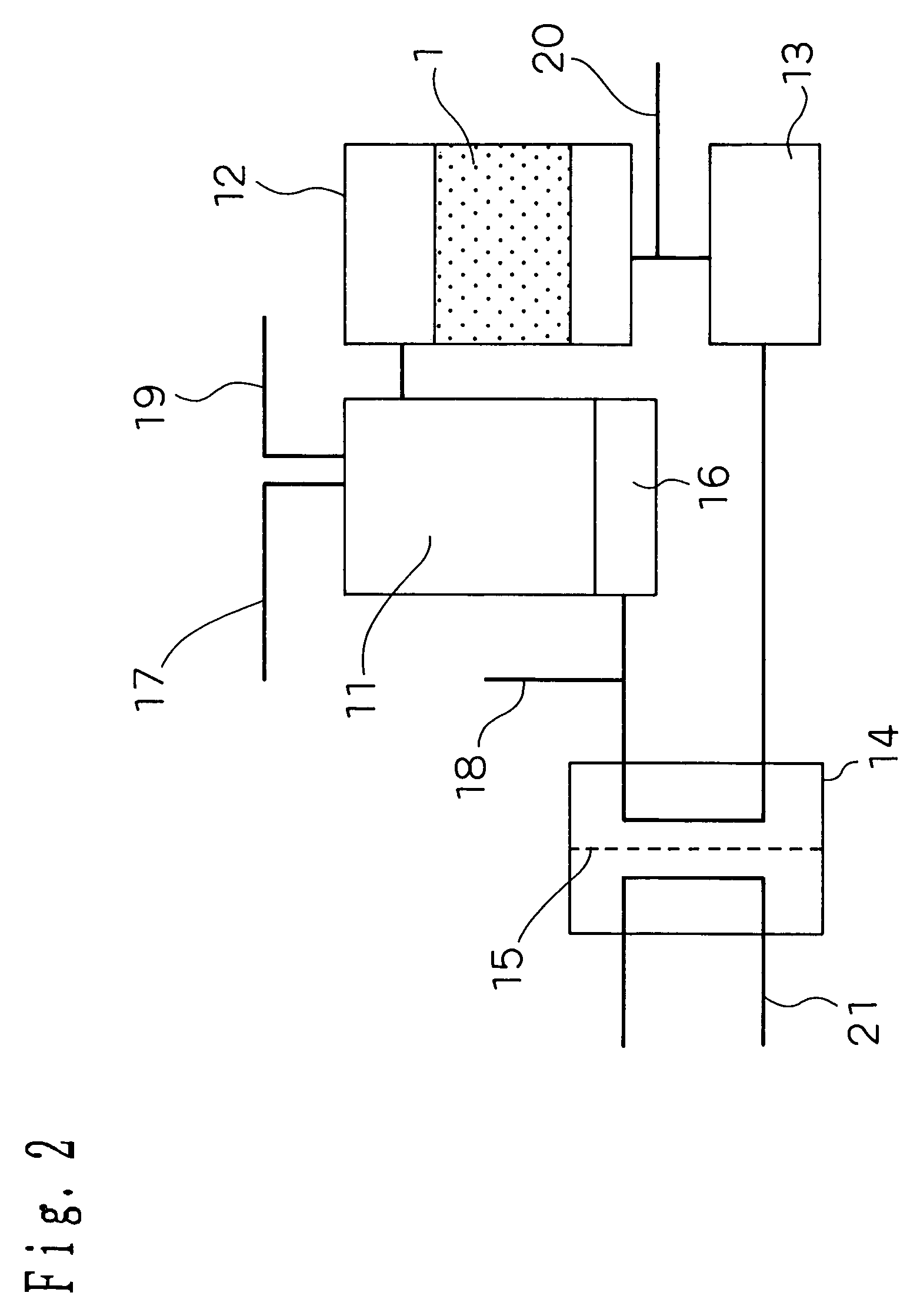CO removal catalyst, method of producing CO removal catalyst, hydrogen purifying device and fuel cell system
a technology of co-removal catalyst and catalyst, which is applied in the direction of physical/chemical process catalyst, bulk chemical production, sustainable manufacturing/processing, etc., can solve the problems of remarkable drop of the electricity-generation efficiency of the fuel cell, the operation of the solid polymer type fuel cell, and the consumption of hydrogen
- Summary
- Abstract
- Description
- Claims
- Application Information
AI Technical Summary
Benefits of technology
Problems solved by technology
Method used
Image
Examples
embodiment 1
[0100]Firstly, the configuration of a hydrogen purifying device according to the present embodiment of implementation of the invention will be described in connection with FIG. 1. FIG. 1 is a schematic longitudinal sectional view illustrating the configuration of a hydrogen purifying device according to an embodiment 1 of implementation of the invention.
[0101]In FIG. 1, the reference numeral 1 indicates a CO removal catalyst (hereinafter simply referred to as “catalyst”) which is provided inside a reactor 2. The reference numeral 3 indicates a modified gas inlet through which a modified gas is introduced. The modified gas which has been reacted is then discharged from a modified gas outlet 4.
[0102]Provided upstream the catalyst 1 is a diffuser plate 5 so that the modified gas can flow uniformly. In order to keep the reactor at a constant temperature, the periphery of the reactor is covered by an insulating material 6 made of ceramic wool at necessary areas.
[0103]The catalyst 1 was p...
embodiment 2
[0137]An embodiment 2 of implementation of the invention will be described hereinafter. FIG. 2 is a schematic diagram illustrating the structure of a fuel cell system according to the embodiment 2 of implementation of the invention. As shown in FIG. 2, the hydrogen purifying device according to the embodiment 1 of implementation of the invention is incorporated in the fuel cell system as CO modifying portion 12.
[0138]In FIG. 2, the reference numeral 11 indicates a modifying portion, the reference numeral 12 indicates a CO modifying portion corresponding to the hydrogen purifying device of the invention, the reference numeral 13 indicates a CO purifying portion, the reference numeral 14 indicates a fuel cell portion, and the reference numeral 15 indicates a protonically-conductive solid polymer electrolyte membrane.
[0139]There are provided a heating portion 16 of heating the modifying portion, a starting material supplying portion 17 of supplying a starting material into the modifyin...
example
Example 1
[0149]Cerium and zirconium nitrate were each dissolved in purified water. The two aqueous solutions were then mixed at a ratio of 1:1 by weight as calculated in terms of CeO2 and ZrO2. Subsequently, the mixture was subjected to ordinary coprecipitation to prepare a precipitate which was then calcined at 500° C. in the air atmosphere to obtain a ceria-zirconia composite oxide powder. The ceria-zirconia composite oxide powder thus obtained was then measured for BET specific surface area by nitrogen adsorption method, which is normally conducted. The result was 105 m2 per gram.
[0150]The powder was then subjected to structural analysis by powder X-ray diffractometry. No diffraction line attributed to single phase of ceria and zirconia was observed. It was thus confirmed that a uniform solid solution had been formed.
[0151]To the ceria-zirconia composite oxide thus obtained were then added a zirconia binder and a small amount of purified water such that the solid content in the z...
PUM
 Login to View More
Login to View More Abstract
Description
Claims
Application Information
 Login to View More
Login to View More - R&D
- Intellectual Property
- Life Sciences
- Materials
- Tech Scout
- Unparalleled Data Quality
- Higher Quality Content
- 60% Fewer Hallucinations
Browse by: Latest US Patents, China's latest patents, Technical Efficacy Thesaurus, Application Domain, Technology Topic, Popular Technical Reports.
© 2025 PatSnap. All rights reserved.Legal|Privacy policy|Modern Slavery Act Transparency Statement|Sitemap|About US| Contact US: help@patsnap.com



